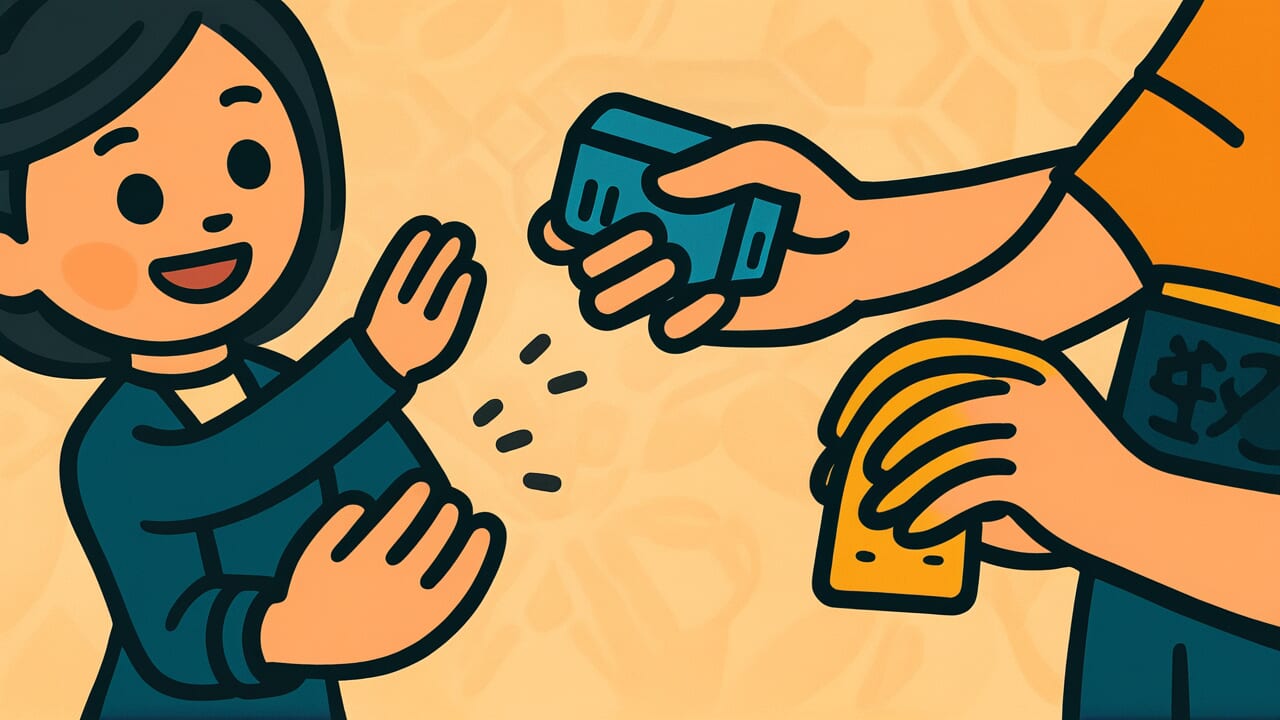How to Read “Borrowing is a gain, lending is a loss”
Karite karitoku kashite kashizon
Meaning of “Borrowing is a gain, lending is a loss”
This proverb describes a harsh reality about lending and borrowing money or things. The borrower gains by delaying repayment or never paying back at all. The lender loses when they don’t get their money or items returned.
People use this saying to warn someone who’s about to lend money. It’s also used when sharing stories about money that was never returned.
You might hear someone say, “I lent him money, but it turned out to be ‘Borrowing is a gain, lending is a loss.'” This expresses disappointment about the unfairness of lending.
Even today, money troubles between friends and acquaintances never stop. This proverb teaches us how risky it is to lend money in personal relationships.
As time passes, borrowers tend to take the debt less seriously. Meanwhile, lenders find it harder to ask for their money back. The proverb captures this psychological imbalance in just a few words.
Origin and Etymology
The exact first written record of this proverb is unclear. However, it likely spread among common people during the Edo period as practical life wisdom.
The phrase has a parallel structure: “borrowing is a gain” paired with “lending is a loss.” This sharp contrast made it memorable and easy to pass along by word of mouth.
By placing the borrower’s “gain” next to the lender’s “loss,” it clearly shows how different their positions are.
The Edo period saw commercial development, and money lending became common among ordinary people. But legal contract systems weren’t well established like today.
Most lending happened through verbal promises. Many lenders had to give up when borrowers didn’t repay.
In this social context, people who witnessed lenders losing money started using this saying. It served as both self-warning and caution to others.
The lesson “assume you won’t get it back when you lend” crystallized into this parallel phrase. It’s a remarkably honest and realistic proverb born from common people’s real lives.
Usage Examples
- The book I lent my friend hasn’t come back after six months. This is exactly “Borrowing is a gain, lending is a loss.”
- I lent him money and he disappeared. It’s truly “Borrowing is a gain, lending is a loss.”
Universal Wisdom
“Borrowing is a gain, lending is a loss” has been passed down through generations because it reveals a deep psychological imbalance. Why do the positions of borrower and lender change so dramatically?
For the borrower, the moment of borrowing creates the most psychological burden. But as time passes, that sense of obligation fades.
Human memory works conveniently. People forget they borrowed, or they justify why they can’t repay. Meanwhile, the lender cannot forget. The unreturned money or item keeps nagging at the back of their mind.
What’s more interesting is how hard it is psychologically to ask for repayment. In Japanese culture, asking for your money back is often seen as “lacking class” or “being greedy.”
This social pressure puts lenders at an even greater disadvantage. Borrowers can unconsciously take advantage of this psychology.
This proverb reflects a cruel but true aspect of human relationships. Good intentions don’t always get rewarded.
Our ancestors must have experienced many times how kindness and trust can sometimes lead to hurt. That’s why this warning has survived across generations.
When AI Hears This
When you break down lending and borrowing mathematically, a surprising structure emerges. At the moment of lending, the lender faces uncertainty about whether they’ll be repaid.
But the borrower has certainty that they’ve obtained money. The same transaction creates completely different information quality for both parties. This is a classic example of asymmetric information games in game theory.
Even more important is the time axis gap. The borrower gains benefit right now, but the lender’s benefit is postponed until future repayment.
In game theory, future benefits are calculated with a “discount rate.” For example, 10,000 yen one year from now is worth only about 9,000 yen today. The lender automatically loses value just from time passing.
What’s more interesting is what happens when the borrower has the option to “not repay.” The game’s equilibrium point collapses instantly.
If the penalty for not repaying is small, the borrower’s optimal strategy becomes “borrow and don’t repay.” The lender can predict this risk but can’t see the borrower’s true intentions beforehand.
This information gap is the root cause of why the same amount of money produces opposite results.
Lessons for Today
This proverb teaches you about balancing goodwill with self-protection. Trusting people is beautiful, but defenseless trust can hurt you.
To apply this in modern life, first redefine what “lending” means. If you lend someone money, think of it as “something that won’t come back.”
If it comes back, you’re lucky. If not, you can accept it. Only lend amounts you can give up. This mindset helps you avoid damaging relationships.
This proverb also teaches “the importance of keeping records.” Not just verbal promises, but simple notes or IOUs that create physical evidence.
This isn’t about doubting the other person. It’s wisdom to supplement each other’s memory and protect the relationship.
Most importantly, be aware when you’re the borrower. If you understand this proverb, you can be someone who doesn’t forget borrowed favors and keeps promises.
Don’t just complain about unfairness in the world. Stand on the side of integrity yourself. That’s the true way to live when you understand this proverb.



Comments